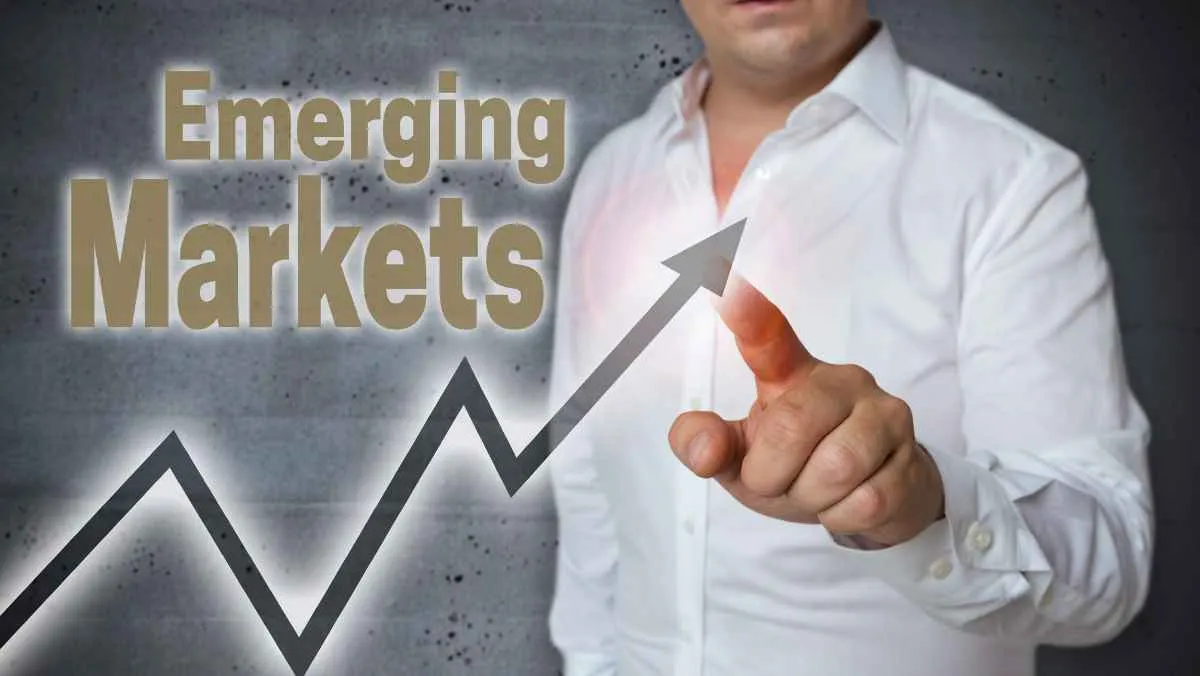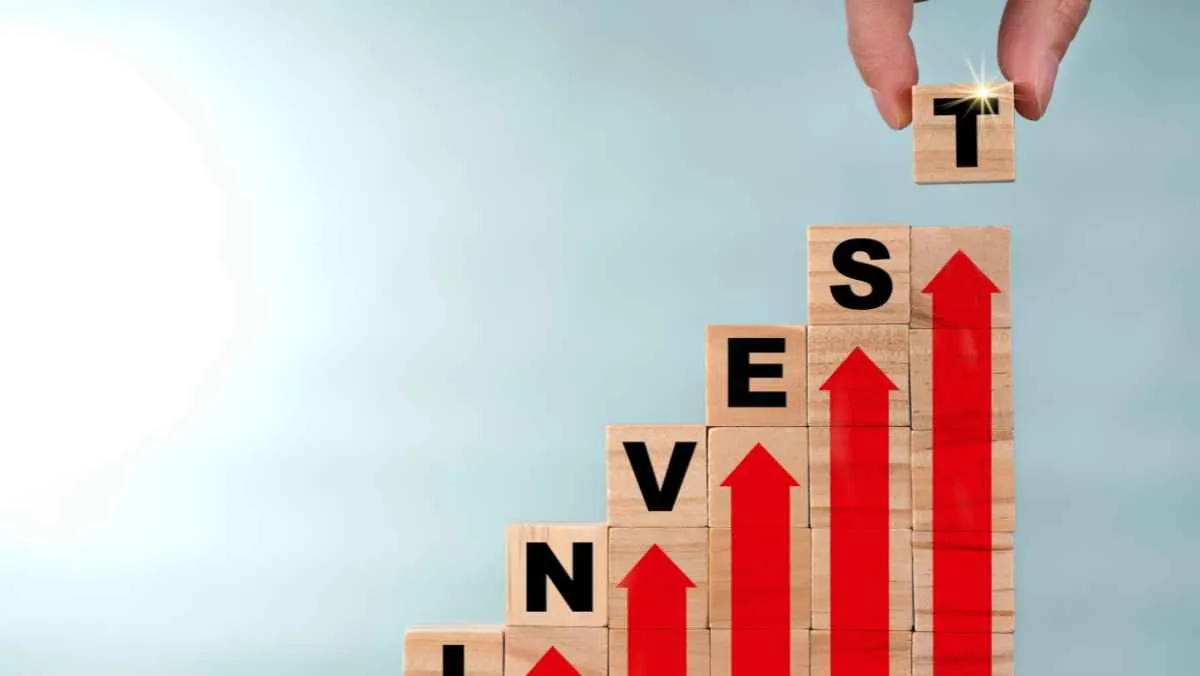
Thursday Feb 1 2024 09:55

10 min

Emerging economies can offer investing and trading opportunities you may have missed. As such, you might want to consider investing in emerging markets to diversify your portfolio. Here’s how to do it.
What are emerging markets?
Emerging markets (EMs) are simply economies that are becoming more involved with the global market as their prosperity and GDP grows. They usually share, or are starting to show, characteristics common with developed economies.
That means they will have some liquidity in local debt and equity markets, increasing trade volumes and foreign direct investment, and internal development of domestic financial and regulatory institutions, and stock exchanges.
While they are on track to reach the same levels of economic complexity as their developed peers, there are some differences that set emerging markets apart from their developed peers:
| Characteristic | Developed economy | Emerging economy |
| Industrialisation | Developed nations tend to have already heavily industrialised and have transferred into service-led economies. | Emerging markets tend to rapidly expand their industrial base. |
| Growth | Growth in developed economies is often slow but steady. | Emerging economies’ GDP growth is usually higher-than-average. |
| Demographics | Population growth has slowed in most developed markets while the middle class has been firmly established. GDP per capita tends to be high. | Emerging markets usually have rapidly growing populations and a developing middle class, however GDP per capita is lower than the developed average. |
| Currency | Developed market currencies are less volatile than their emerging counterparts and are easily exchangeable. | Currencies in emerging markets are more volatile. Exchange rate mechanisms are being developed to discourage citizens from sending cash overseas and encouraging FDI. |
| Commodities | Developed economies are not as vulnerable to swings in commodity prices. | Many emerging markets are dependent on commodities for their economic prosperity, thus are susceptible to price swings. |
One of the key takeaways here is rapid growth but high volatility. Take Russia for instance. Its economy is intrinsically linked to oil & gas.
40% of government revenues come from its hydrocarbons industries. While it has prepared measures to encourage financial investment, such as localisation deals for car manufacturers and oil & gas equipment producers, its economy is still highly susceptible to oil price volatility.
PwC forecasts the Emerging 7, i.e. the most prominent emerging economies, will experience annual average growth of around 3.5% between 2016 and 2050, well ahead of the G7’s forecasted growth of 1.6%.
Developing economies are found across the globe, but if you’re looking to invest in emerging markets, you may want to start with the Emerging 7. These are seven countries identified by PricewaterhouseCoopers in 2006 as future global economic powerhouses, as a counterpoint to the traditional Group of Seven (G7) economies that dominated the 20th century (US, UK, France, Germany, Canada, Japan & Italy).
The Emerging 7, and their current GDPs, are:
Certainly, these countries grab the emerging economy headlines – especially China. Investors are increasingly looking at how to invest in China because it’s predicted that the country will overtake the US as the world’s preeminent economic power at some point this century.

There are plenty of options open to invest and traders who are looking at investing in emerging economies.
As ever, it’s very important to do thorough research if you plan on trading and investing. Doing thorough analysis on stocks, emerging market ETFs, and so on will help you pick stocks or assets suitable for your investment or trading strategy.
Historically, returns from EM equities have been relatively low. According to JPMorgan, EM equity returns have only averaged +3.6% per year from 2010 to 2019. But 2020 was different. The MSCI Emerging Markets Index outperformed the S&P 500 for the first time since 2017 (EM gained +18.5% versus the S&P 500’s +18.4%).
Past performance is not indicative of future results, but the above rise could be encouraging for investors looking to put capital into emerging economies.
So, how can you get involved? You may wish to invest in companies based in emerging markets. Taking South Korea as an example, Samsung and Hyundai are viable, internationally renowned large caps helping power the South Korean economy.
In China, Alibaba, Tencent, and Geely Motors are all tech-related stocks that have performed well over the past year.
Emerging markets investors may also use ETFs. Exchange traded funds group together stocks and assets into a single fund, giving investors exposure with lower risk.
On our Marketsx trading platform, for instance, we offer the Wisdom Tree Emerging Markets High Dividend ETF (DEM). This draws its constituents from a Wisdom Tree index that measures the performance of EM stocks that offer high dividend returns.
It is composed of mainly Russian and Chinese firms, including Rosneft and the Industrial Commercial Bank of China, but also includes other big hitters like Brazil’s Vale, one of the largest mining companies in the world, Taiwanese plastics giant Formosa Plastic Group.
You may also consider bonds. Bonds are fixed-income instruments representing a fixed amount of debt. They are most often issued by governments or corporations, paying regular interest payments until the loan the bond is drawn from is repaid.
There are several different varieties of bond, so you could potentially create a diverse portfolio of just bonds issued by governments of emerging economies. Bonds are generally considered a more secure investment than equities too.
One important thing to remember is volatility is more likely in emerging economies than developed ones. Economic conditions may change more suddenly in an emerging market than a developed one, so bear that in mind when investing. You may end up losing more than you initially invested.
We spoke earlier about how emerging markets are often more susceptible to commodity price swings. Russia is a good case study here. In 2015, the oil price dropped significantly.
As mentioned earlier, Russia relies heavily on oil & gas for revenues and the performance of its hydrocarbons industry has major ramifications for its economy as a whole. During this time, the value of rouble effectively halved, making Russia less attractive for oil & gas investment and development for international firms.
It’s these type of market trends you have to fully consider when investing in emerging markets. However, the purpose of investing in emerging markets is to trade higher risk with potentially higher rewards.
If you are planning on investing in emerging markets, it’s a good idea to ensure you have a diverse portfolio of stocks and assets. You may wish to include an emerging market ETF, plus several stocks from one country, a mixture of stocks from one country and so on.
Diversifying your portfolio is way to help you mitigate risk. You’re aiming to lower the effects of under or negatively performing assets. Gains in one asset may help offset losses in another. An example diversified portfolio, based around EMs, might look something like this:
This example portfolio draws heavily on stocks from EMs, but it also balances that out with capital allocated to equities and bonds in developed markets. In theory, any losses caused by market volatility in emerging economies could be offset by steady performance from the developed economies.
Before investing in an emerging market, it’s important to know the difference between investing and trading as distinct practices.
The goal of investing is to gradually build wealth over an extended period of time through the buying and holding of a portfolio of stocks, baskets of stocks, mutual funds, bonds, and other investment instruments. You hold onto them in the hope they will grow in value over the long-term.
Trading involves more frequent transactions, such as the buying and selling of stocks, commodities, currency pairs, or other instruments. Many trading services, such as ours, run using products like CFDs or spread betting.
Unlike investing, you do not own the underlying asset here. Instead, you are trading on its price movements. CFD trades use leverage, so you can get exposure to a stock or market for the fraction of the initial cost it would take to invest. However, because you are trading on margin, your losses can be increased too.
Both practices require you to mitigate risk as best you can. Trading and investing are risky and can result in capital loss. Always do your research and due diligence prior to committing any funds, and always ensure you can afford any losses you may occur.
